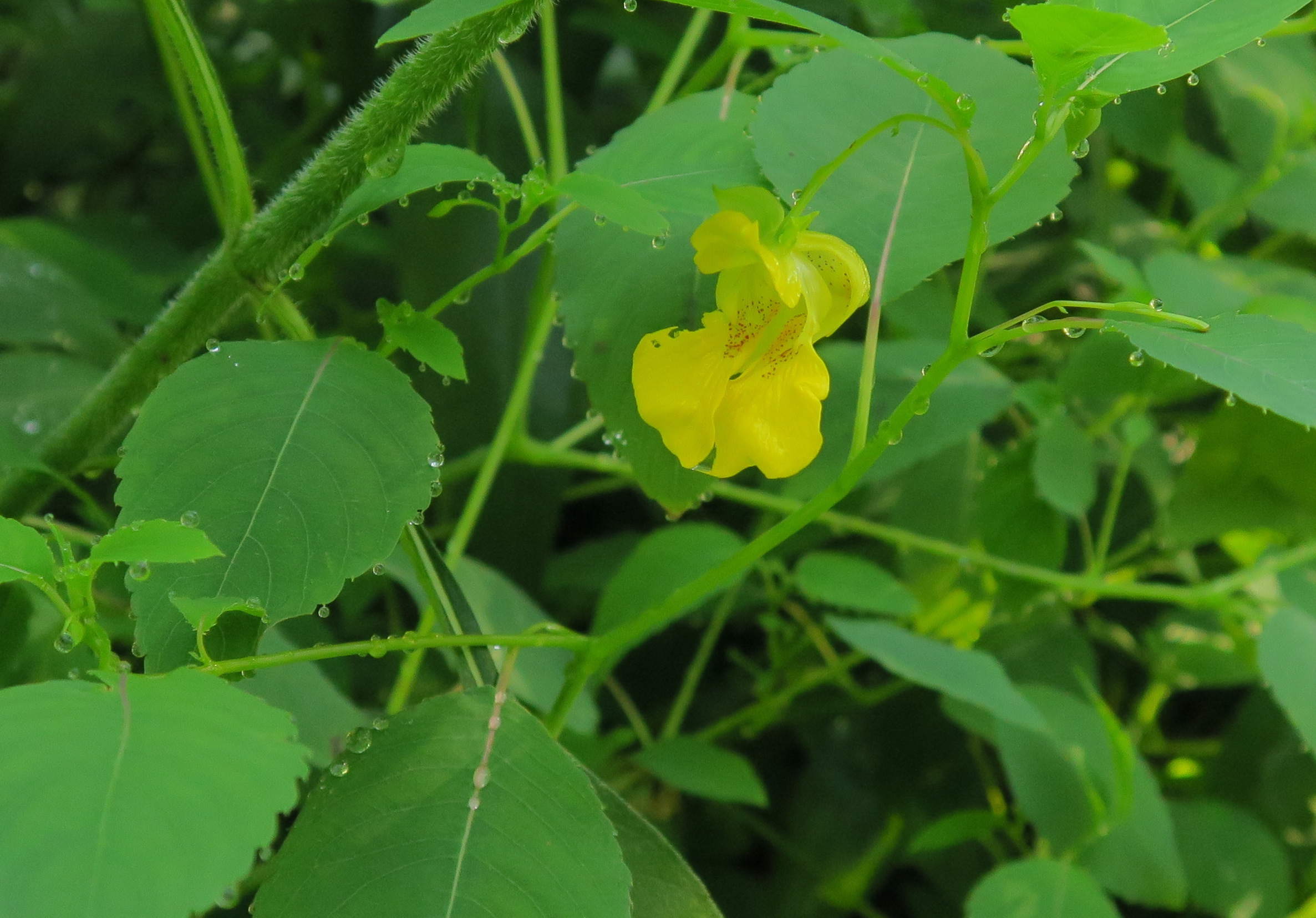I walk along parts of the Windsor Heights trail almost every day during the summer, and one of the wildflowers I’m most excited to see blooming is Yellow jewelweed (Impatiens pallida). These plants are native to most of North America east of the Rocky Mountains and thrive in wooded areas with partial shade.
According to the Illinois Wildflowers website, “Yellow Jewelweed also tolerates full sun, light shade, and mesic conditions (if it receives some protection from the afternoon sun). This species is a little more tolerant of dry conditions than Impatiens capensis (Orange Jewelweed).” Bleeding Heartland covered the orange variety of jewelweed here. I’ve usually found the orange flowers in very wet areas, such as next to a pond.
I took all of the photos enclosed below in August 2024 next to the Windsor Heights trail that runs along North Walnut Creek. There are also some colonies of yellow jewelweed farther north on the same trail in Urbandale, heading from Windsor Heights toward Walker Johnston Park.
Sometimes called “nature’s answer to poison ivy,” orange and yellow jewelweed are known for their anti-itch properties. Relief comes from the juice in the leaves and stems. Here’s what the foliage of pale or yellow jewelweed looks like before flowers appear:

If you want to get a closer look at these plants, watch where you step. I often see them growing near poison ivy, which takes up most of the frame in this image. The jewelweed is growing near the upper right corner.

Yellow jewelweed flowers have a distinctive shape: “Flowers are tube or funnel shaped, 1 to 1½ inches long and nearly as wide as long, with a narrow spur at the back that bends down. Nectar is stored in the spur. There are 2 round broad lower lobes and a much smaller upper lobe.”

The flowers are mostly yellow but usually have red spots. I assume the spots help guide ruby-throated hummingbirds and bumblebees, which are “especially common visitors” seeking nectar from the flowers.

You may need to crouch down to look for flowers blooming underneath the leaves:


Plants range in height from about two feet to six feet. Here’s a specimen on the smaller side.

The obvious way to distinguish orange and yellow jewelweed is by the color of the flowers. Minnesota Wildflowers also notes, “Pale Touch-me-not is very similar to Spotted Touch-me-not, (Impatiens capensis) but is generally a larger plant with larger leaves that are more finely toothed, and larger flowers with a shorter spur at the back.” Here are orange jewelweed flowers that I photographed in 2017. You can see a long spur at the back of one.

Here’s a closer look at a yellow jewelweed flower, including the spur at the back:

Pale jewelweed has a long blooming period. You may see buds, flowers, and seed pods developing on the same plant.

A closer look at a developing seed pod on the left, next to a flower viewed from the side. On the right, a flower is past its prime.

Don’t be put off by the common name “touch-me-not”—it doesn’t mean the plant is harmful to touch. Rather, it comes from the “sensitive triggering of seeds from the ripe capsule.” The North Carolina State Extension website explains, “This plant has seed capsules that spring open as the seed ripens and ejecting the seed a considerable distance. These capsules are sensitive to touch and make seed collection difficult but fun, especially for young gardeners.”
I went out on August 7 to capture a phone video of what happens when you touch a seed pod. Apologies for the shaky camerawork!


1 Comment
That video is great!
Watching it made me feel like a kid at summer camp again. Fun!
PrairieFan Thu 8 Aug 2:14 PM